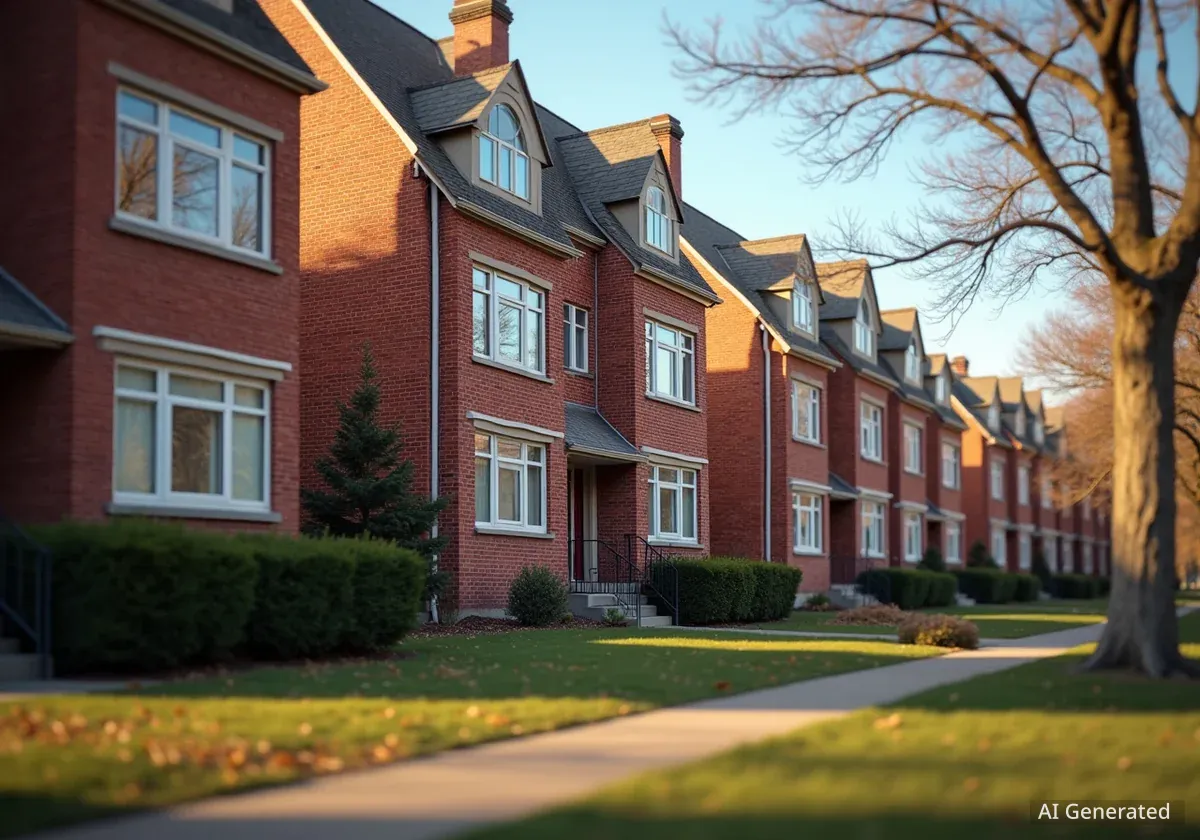In just twelve months, childhood friends Connor Swofford and Pieter Louw have acquired a significant real estate portfolio in Buffalo, New York. Starting in October 2024, the pair rapidly expanded from their first property to owning 24 rental units across nine multi-family buildings, demonstrating a disciplined and strategic approach to property investment.
Their method combines a specific investment strategy with unconventional financing, allowing them to scale their part-time venture without needing substantial personal savings for each new purchase. This has enabled them to build a cash-flowing portfolio while maintaining their full-time careers.
Key Takeaways
- Connor Swofford and Pieter Louw acquired 24 rental units in Buffalo within one year.
- They utilized the "BRRRR" method: Buy, Rehab, Rent, Refinance, Repeat.
- Financing was primarily secured through hard money loans to enable rapid acquisitions.
- Their focus is on multi-family properties that require manageable renovations and can generate income during the rehab process.
A Partnership of Complementary Skills
Connor Swofford and Pieter Louw, both approaching their 32nd birthdays, have been friends since the seventh grade. Their professional partnership leverages a unique blend of skills that has proven essential to their success. Louw, a resident of Buffalo, works as a real estate agent and has a strong background in construction. This gives the team on-the-ground expertise in property assessment and renovation management.
Swofford, based in Charleston, is a startup consultant who brings business acumen and strategic planning to the table. He initially wondered what he offered beyond splitting costs. Swofford recalls Louw's perspective on their venture: "There's not much better than having fun, making money, and doing it all with your best friend." This shared vision has been a cornerstone of their collaboration.
The Engine of Growth: The BRRRR Method
The duo's rapid expansion is powered by a strategy known as BRRRR, an acronym for Buy, Rehab, Rent, Refinance, Repeat. This method is designed to recycle investment capital, allowing investors to move from one project to the next without having to save up a new down payment each time.
Their first acquisition, a three-unit property consisting of a duplex and a carriage house, served as a perfect test case. "The front two units were pretty much ready to go, and one was already rented," Louw explained. "The carriage house needed some work, but nothing crazy." This allowed them to generate rental income almost immediately.
First Deal by the Numbers
On their initial property, Swofford and Louw invested approximately $40,000 in renovations. After the work was completed and the property was fully rented, it was appraised at a higher value, creating about $90,000 in new equity. This allowed them to recoup their entire initial investment through refinancing.
"We were pretty much able to pull out all the money that we invested into it and take that money for the next one," said Louw. "That really kick-started us." This process of using forced appreciation from renovations to extract capital is the core of their scaling model.
Financing Strategy and Risk Management
Instead of traditional bank loans, which typically require a down payment of at least 20% and have a lengthy approval process, Swofford and Louw use hard money loans. These are short-term loans from private lenders that can be secured much faster, which is crucial in a competitive market.
However, this approach comes with risks. "It's a big balloon payment, you have to personal guarantee the loan, and there's a bit more paperwork and harder compliance hurdles to clear," Swofford noted. Success with hard money lending hinges on executing the renovation and refinancing on a strict timeline.
To mitigate these risks, they rely heavily on Louw's construction expertise to create accurate budgets and timelines. Knowing the potential After Repair Value (ARV) is equally critical.
"If you buy a place for $200,000, put $100,000 into it, and then it's only worth $300,000, once you refinance, you can only pull 75% of that out, so you'd still have a lot of money in it," Louw cautioned. He emphasized that if the rehab doesn't build sufficient equity, the strategy becomes ineffective.
A Disciplined Approach to Property Selection
The team focuses on a specific niche: multi-family properties with three to ten units. Crucially, they seek out properties that do not require a complete gut renovation and, whenever possible, already have tenants in place.
This provides an immediate revenue stream that helps offset costs during the renovation period. "Almost every property of ours has had a tenant still living in it, and that tenant is basically able to pay the interest expense as we are rehabbing the property," Swofford explained. "So, we basically get to semi-rehab it for free in a way."
Investing as a Side Hustle
Both Swofford and Louw maintain their primary careers, treating their real estate portfolio as a side business. This financial independence allows them to make objective, data-driven decisions rather than emotional ones. "We're at a point where we don't need to make any emotional investments," Louw said. If the numbers on a potential deal don't work, they have the freedom to walk away and wait for the right opportunity.
By sticking to their formula of buying undervalued multi-family properties, executing strategic renovations, and leveraging their capital efficiently, the two friends have built a substantial asset base in a remarkably short period, setting a foundation for long-term wealth creation.





